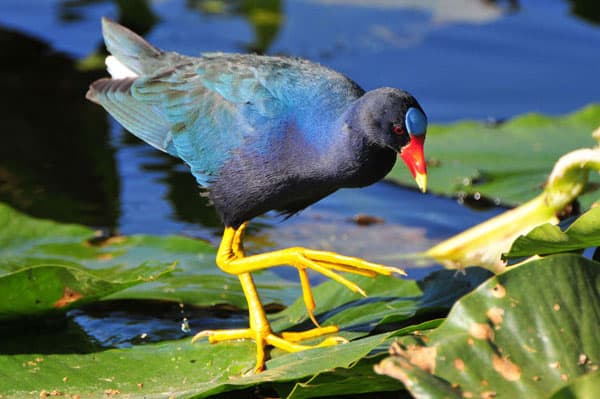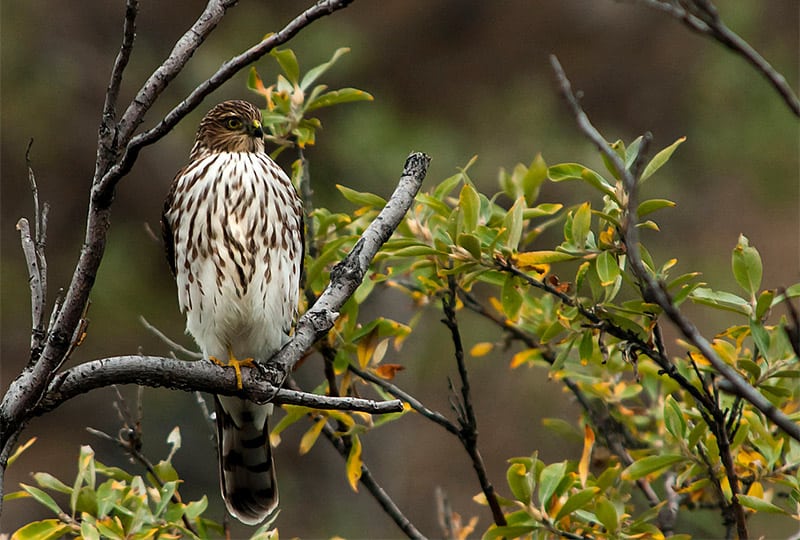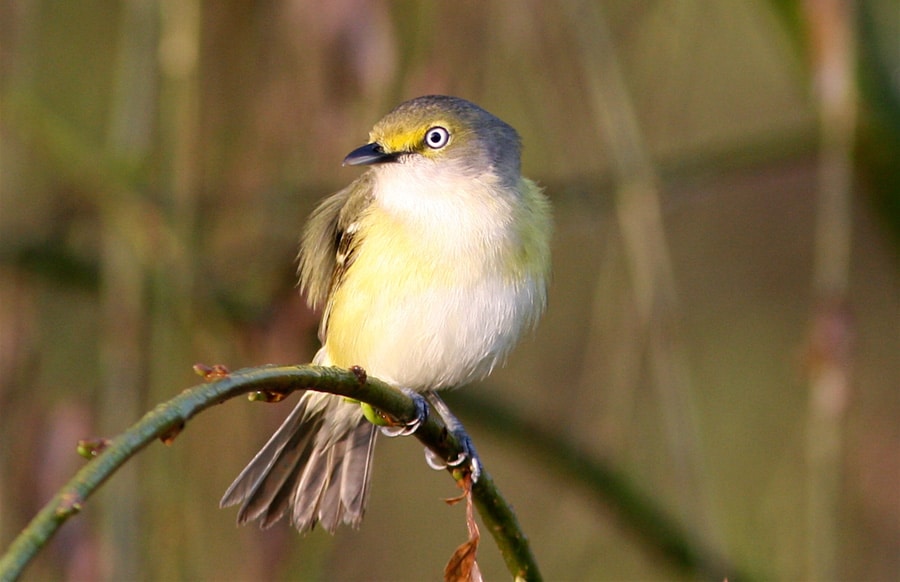Fall birds of Florida (September, October, November)
During September the southward land bird migration reaches its peak, with inland sites seeing more birds than they did in spring. The species composition of this migration is similar to that of the northward movement in spring but a few species such as blackpoll warbler are decidedly scarcer during the fall due to this bird’s migration route which takes it much farther east over the Atlantic, thus bypassing Florida. Many species of warblers are less colorful at this season, providing a greater identification challenge.
September is also the month when the bulk of shorebird migration takes place. Following hard on the heels of the first adult birds that migrated in late summer, thousands of juvenile birds begin to appear, all in their immaculate juvenal plumage that is only worn for a few months in their first fall. All these bird are heading south from their arctic and boreal breeding grounds to wintering areas as far away as Tierra del Fuego.
Inland flooded fields and sod farms (such as the ones found at Belle Glade on the south side of Lake Okeechobee) attract several long-distance migrant species, including hundreds of pectoral sandpipers and small numbers of the attractive, but scarce, buff-breasted sandpiper and upland sandpiper. Later in fall this habitat also provides a stopover point for the American golden-plover on its way to Argentina.
Other shorebirds that generally prefer inland freshwater habitats at this season include solitary, least, and stilt sandpipers, black-necked stilt, both greater and lesser yellowlegs, Wilson’s phalarope, and long-billed dowitcher. In contrast, short-billed dowitchers are more usually found in coastal areas and saltwater habitats than their close relatives. Florida’s shorelines also become crowded with numerous other species of shorebirds in September and many of these are high-arctic breeding species.
Large numbers of black-bellied and semipalmated plovers mingle with much smaller numbers of piping plovers which breed inland in ever decreasing numbers from Missouri to Saskatchewan and also along the Atlantic seaboard south to Virginia. Florida’s beaches are a very important wintering ground for this threatened species with places such as Honeymoon Island State Recreation Area, Fort de Soto County Park (both in the Tampa Bay area) and Tigertail Beach in Naples being particularly good spots to observe them. They are often found in company with other small plovers such as snowy and Wilson’s plovers.
Other shorebirds that become common or abundant in certain areas along the beaches in September include sanderling, red knot, ruddy turnstone, and semipalmated and western sandpipers. A little later in October large numbers of dunlin begin to appear, and for most of these Florida marks the end of their southward journey from arctic latitudes. Among the larger species willet, marbled godwits, and whimbrel are quite common, and in most years a few long-billed curlews are found along the Gulf Coast.
A particular feature of the fall season in Florida is the extensive migration of raptors from their breeding rounds up north to wintering grounds in Florida itself and points further south in Central and South America. The earliest raptor to leave is the swallow-tailed kite, which is usually absent after the end of August apart from the odd straggler into September. In that month Mississippi kites and broad-winged hawks begin to move west through the panhandle but raptor migration peaks in the first half of October.
The best places to observe this movement include Guana River State Park near St. Augustine, and especially on the Keys at places like Boot Key and Curry Hammocks State Park, both near Marathon. Turkey vultures, American kestrels, sharp-shinned and broad-winged hawks are the most numerous species present with several thousand of each species being seen at some of these sites every year. Next in order of abundance are ospreys, northern harriers, Cooper’s hawks, merlins, and peregrine falcons, with many hundreds occurring during each season. It is even possible to see more than 100 peregrine falcons in a single day on the Keys.
Surprisingly, even a few dozen Swainson’s hawks are observed every year despite the fact that they breed almost exclusively in the western United States and western Canada. These are the longest distance migrants of all among the hawks, wintering en masse on the pampas in Argentina. A few other species of buteos such as red-tailed and red-shouldered hawks and bald eagles are usually seen at these hawk watches only in small numbers. Most of Forida’s breeding population of short-tailed hawks leaves northern and central Florida in fall to winter in the Everglades and as far south as Key West, so these, too, are observed at the hawk watches on the Keys in small numbers.
The number of seabirds increases off Florida’s coasts in fall, and pelagic trips into the Atlantic can be quite rewarding. Among the species most frequently encountered are parasitic and pomarine jaegers, great and Cory’s shearwaters, red and red-necked phalaropes, Wilson’s, Leach’s, and occasionally band-rumped storm-petrels.
In November large numbers of northern gannets can regularly be seen from shore both off the Atlantic seaboard and in the Gulf of Mexico. Onshore, gatherings of thousands of terns can be found in a number of localities starting in September and lasting into October with Honeymoon Island State Recreation Area, Fort DeSoto County Park, Merritt Island National Wildlife Refuge, and Sebastian Inlet being among the best places to see them. The most numerous species are common, Forster’s, Sandwich, and royal terns, with smaller numbers of Caspian and black terns mixed in. Large flocks of black skimmers often accompany these gatherings.
By the end of November large numbers of land birds, waterfowl, loons and grebes from further north have moved into the state to spend the winter here.




